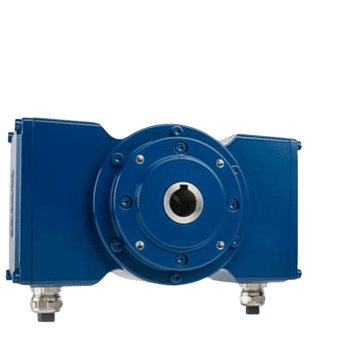
In modern rolling mills, precise control of machinery and accurate monitoring of operations are paramount. One device that has revolutionized this process is the rotary encoder. A rotary encoder provides feedback on the rotational speed & position of shafts, ensuring high precision in motion control and helping achieve optimal performance in various machinery applications.
Rolling mills rely on advanced technologies for effective production. The rotary encoder has become an essential tool in many industrial settings, offering reliability and accurate measurements crucial for manufacturing high-quality products.
What is a Rotary Encoder?
A rotary encoder is an electromechanical device that converts a rotating shaft’s angular position or motion into digital or analog output signals. Control systems process these signals to monitor industrial machinery’s speed, direction, or position. Often called a shaft encoder, this device is vital in enabling automation and precision in operations.
Two main types of rotary encoders exist: incremental and absolute encoders. An incremental rotary encoder outputs pulse signals relative to movement, while an absolute encoder delivers a specific digital code for each shaft position. Based on their internal sensing technology, encoders can also be classified as mechanical encoder or magnetic encoder.

Components and Working Principle of a Rotary Encoder
A rotary encoder comprises several key components that contribute to its precise performance. The core structure includes:
- Rotating Shaft: The mechanical component attached to the machine’s drive or motor. (absent in magnetic encoder)
- Pulse Disc or Wheel: A disc made of glass, plastic, or metal with precise patterns (slots, lines, or magnets) etched or embedded onto it.
- Sensing Element: Optical or magnetic sensors that detect the changes in patterns as the disc rotates.
- LED and Photodetector (in optical encoders): An LED emits light that passes through or reflects off the code disc. A photodetector senses the interruptions and converts them into electrical pulses.
- Magnetic Sensor (in magnetic encoders): Uses a magnetized wheel and a Hall-effect sensor to detect changes in magnetic fields and translate them into digital signals.
- Signal Processing Circuitry: Amplifies, filters, and encodes the signals to produce standardized outputs.
The working principle of a rotational encoder depends on how it detects motion. As the shaft turns, the code disc rotates, causing a change in light or magnetic field. The Sensor captures these changes and transmits pulses (in incremental encoders) or position data (in absolute encoders) to the control system.
Some advanced mechanical encoders also feature dual output channels (A and B) for detecting direction. A third channel (Z) is used for indexing, offering a reference point for shaft position.
Applications of Rotary Encoder in Rolling Mills
The reliability and precision of rotary encoders make them indispensable in rolling mill operations. Their integration into various systems enhances productivity, quality, and machine lifespan.
Position Feedback and Control of Rollers
In rolling mills, accurate position control of rolls is critical for dimensional precision. A rotary encoder continuously provides position data for motor shafts and rollers. This real-time feedback ensures the material thickness, width, and alignment remains within tolerances. It reduces material waste and improves the uniformity of the finished product.
Speed Measurement and Monitoring of Main Motor Drives
Maintaining the rollers’ consistent rotational speed is crucial to product integrity. A rotary encoder measures the rotation speed and feeds it back to the drive system. This data allows operators to regulate roller velocity in real-time. In speed-sensitive applications, such precise monitoring prevents material slippage, stretching, or surface defects.
Torque Monitoring and Load Balancing
Though not a torque sensor directly, when combined with motor current data, rotary encoders help infer torque levels on rotating shafts. This is vital for detecting overloads, uneven load distribution, and mechanical wear. It prevents unexpected shutdowns, reduces downtime, and extends the equipment’s lifespan.
Automatic Gauge Control (AGC)
Rolling mills require constant adjustments to maintain product thickness. AGC systems use rotary encoders to sense roll positions and make fine adjustments automatically. This ensures a stable rolling process. In feedback loops, incremental encoders or absolute encoders transmit accurate data, enabling micro-level control of the gap between rolls.
Screw Downs
In rolling mills, encoders are crucial components in screw-down systems, which control the gap between the rolls and thus the thickness of the material being rolled. They provide precise position feedback, enabling accurate roll positioning and consistent material thickness.
Edger & Side Guide
In a rolling mill, edgers and side guides play crucial roles in controlling the shape and position of the material being rolled. In rolling mills, encoders are crucial components, used in edgers and side guides to provide precise feedback on position and speed, ensuring accurate strip positioning, consistent thickness, and efficient operation. They enable closed-loop control systems that enhance product quality and minimize waste.
Coiler and Decoiler Synchronization
Material coils are wound and unwound in steel rolling plants before and after rolling. A rotary encoder monitors the shaft speed and position of coilers and decoilers. Synchronization between these units ensures smooth material handling and tension control, minimizing breakage or misalignment during processing.
Cut-to-Length Control
Rotary encoders aid in determining the length of material that has passed through the mill. By measuring shaft rotation, the system calculates and triggers precise cutting operations. This helps produce uniform sheets or bars without manual intervention, improving throughput and reducing human error.
Conclusion
Rotary encoders are critical in rolling mill automation, enabling precise control over motion and feedback systems. Their integration improves quality assurance, machine reliability, and operational efficiency. From basic shaft monitoring to high-end AGC systems, encoders streamline the entire process and reduce the need for manual adjustments.
Manglam Electricals is a trusted supplier of premium rotary encoders, including magnetic encoders, incremental rotary encoders, and mechanical encoders tailored to suit heavy industries. Their robust design, resistance to dust and heat, and long operational life make them ideal for rolling mill applications. With Manglam’s encoders, manufacturers can expect better process control, lower maintenance costs, and improved output quality.

Leave a Reply